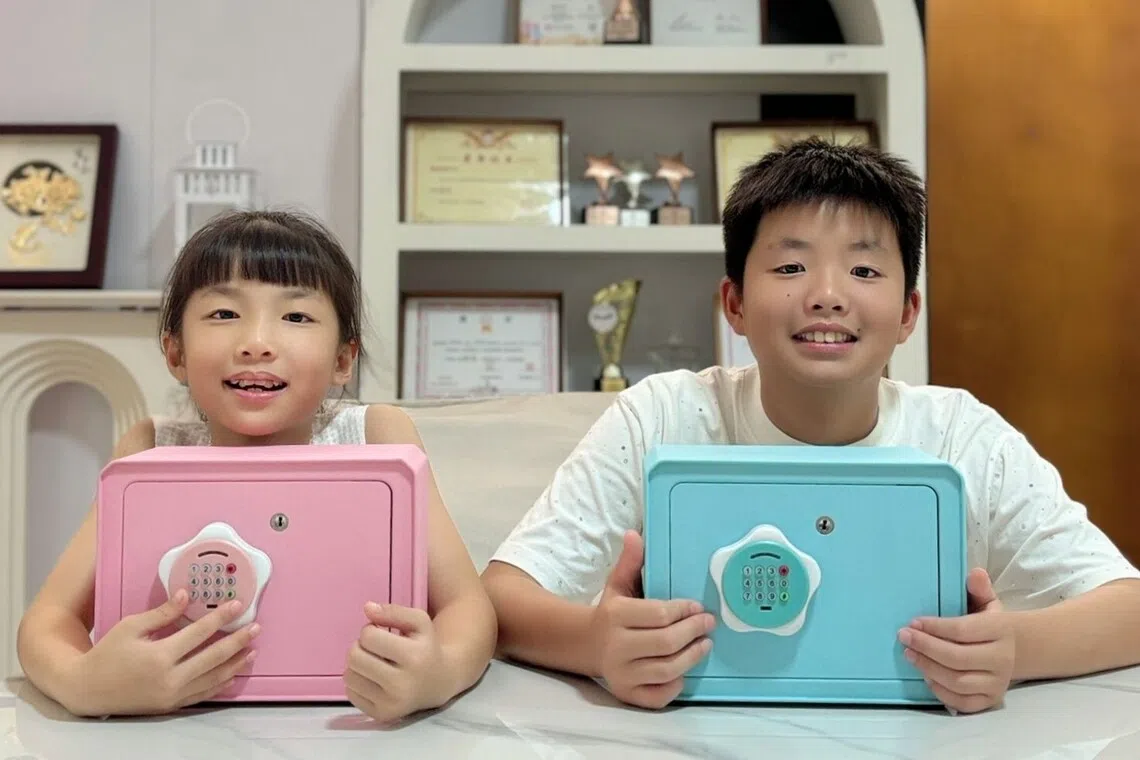Every three months, Mr Thomas Woo and his wife Candy Meng roll up their sleeves and join their children in tidying up their kids’ rooms in their four-room condominium.
Married for 19 years, the couple are parents to Oscar, 11, and Olivia, 9.
Together, the four of them sort through clothes, toys and knick-knacks, deciding what to keep, what to give away, and what they no longer need.
It’s more than just spring cleaning. The couple has found a way to teach their kids how to differentiate between needs and wants – fundamental to shaping healthy financial habits.
“They have many things; We want them to keep (this) in mind when they get the urge to buy something (new),” explains Ms Meng, 39, “and to think about whether they really need it.”
Ms Meng and her husband, 49, run an aesthetic business. Founded in 2012 with just one outlet in Bedok Central, Oscar Head Spa now has four locations across Singapore and hires 38 employees.
The couple say they have been working closely with UOB since they started the business, drawing on the bank’s advice and loans for expansion.
As entrepreneurs, they know firsthand how important it is to budget, save and plan ahead.
“I did not have a proper investment plan in my 20s,” recalls Mr Woo, who used to work as an engineer. He would spend whatever he earned without setting aside money for savings or investments.
Now, the couple are focused on building their retirement fund with financial advice from the bank, and saving for their children’s education needs.
Mr Woo regrets not starting earlier. “I really want my children to understand the importance of saving (from young)”, he says.
To instil the habit of saving, Mr Woo and Ms Meng let their children manage their own allowance after they entered primary school.
Each child now receives around $150 a month to spend in school.
Every Friday, the couple would sit down with Oscar and Olivia, both pupils at Ai Tong Primary School, to review how they spent their allowance.
Most of the spending goes to food. “If they spend more than usual on something (else), we’ll ask why,” Mr Woo says.
He also encourages both children to save 10 to 20 per cent of their allowance in their piggy banks – a blue safety deposit box for Oscar and a pink one for Olivia.
Oscar says he spends around $5 each day, primarily on meals and snacks in school. “Right now I’m saving up to buy football (trading) cards, which cost $2 for one pack. I want to get 10,” he says.
His sister, Olivia, recently bought a smart watch that costs about $90, after saving about $8 a week for 10 to 15 weeks. How does she save? “I just cut back on spending on things like food and stationery.”

Parents Candy Meng and Thomas Woo regularly declutter their children Olivia and Oscar’s rooms to help them better understand needs and wants – fundamental to shaping healthy financial habits.
PHOTO: COURTESY OF THOMAS WOO AND CANDY MENG
Such exercises help kids to learn simple concepts like budget and saving, and develop the right attitude towards money, says Mr Gidon Jerome Kessel, UOB group head of Deposit and Wealth Management.
And as the kids get older and more confident in managing money, he advises, parents can consider giving a fortnightly allowance – instead of daily or weekly ones.
This helps to build important financial skills like planning for future expenses and managing larger sums of money.
Another way to make learning financial literacy fun: “(Give) them incentives to save, such as matching their savings dollar for dollar,” Mr Kessel says.
What should parents do to instil healthy financial habits in their children? Mr Gidon Jerome Kessel, group head of Deposit and Wealth Management, UOB, shares these tips for financially-savvy kids:
1. Teach them about the difference between “needs” such as food and clothing, and “wants” such as toys and games.
2. Use piggy banks to teach them about budgeting. For example, by encouraging them to portion their pocket money in the following ways:
40 per cent goes towards everyday spending;
40 per cent towards a short-term savings goal such as buying a small toy; and
20 per cent towards a long-term savings goal such as buying a bicycle.
3. Open joint saving accounts and explain basic banking concepts to children when they make deposits. This gives them first-hand experience in growing their savings with interest over time.
As children reach their teenage years, says Mr Kessel, they can be introduced to more complex topics such as debt and investing.
Opening a joint savings account with the child is an easy and practical way to do so. “Explain to them how interest works and show them how saving small amounts regularly can add up to a significant sum of money over the years,” he says.
Even routine purchases, such as grocery shopping, can become lessons in responsible spending.
“Show them how to discern between various prices and explain why buying one item might make better sense over buying another,” Mr Kessel explains. “Let them weigh their considerations and learn from the consequences of each decision they make.”
For Mr Woo and Ms Meng, who have made financial education a regular family routine, the lessons appear to be taking root.
The couple have opened joint savings accounts for their children. About 80 per cent of the money from red packets Oscar and Olivia receive during Lunar New Year and birthdays go into these accounts. The rest is kept in their piggy banks for day-to-day spending.
The children would dip into their piggy banks to buy gifts for their parents on Father’s Day and Mother’s Day, or for each other. In September, Olivia used her own savings to buy her brother a birthday present: A pair of wireless earphones that cost around $70.
It’s Olivia’s way of showing her sincerity, says her mum.
Sometimes, Ms Meng even gets an unexpected reality check from her daughter. She recalls how Olivia questioned her on a recent shopping trip, asking her whether the handbag she was eyeing was a “need”.
“I guess she does have a good understanding of needs versus wants,” Ms Meng says, laughing.
Right by you
series explores how organisations can drive meaningful impact for communities, customers and employees.
In partnership with


